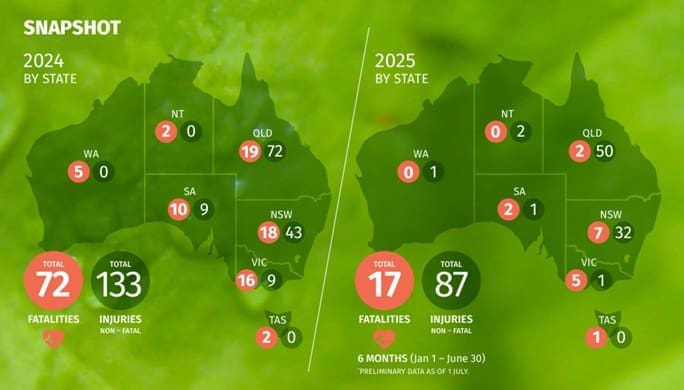Farm Safety: A Call for Awareness and Action
Felicity Richards, Chair of Farmsafe Australia.
Felicity Richards, a Tasmanian beef producer, recalls a moment that underscored the vital importance of farm safety. “I decided I would take my two girls (aged 4 and 2) out to help brush my horse down,” she said. As someone with a lifetime of experience around horses, Felicity felt comfortable, but her reality changed in an instant.
“My focus was on making sure the children were safe around the horse,” she continued. “The horse was tied up, the children knew not to walk behind it, and the horse seemed relaxed.” However, a sudden call from her 4-year-old changed the course of that peaceful moment. “Mum, Esme is in the water trough,” the child said.
Felicity rushed to find her 2-year-old caught precariously in the water trough. “She probably reached out to touch the float, slipped, and her little legs weren’t long enough to touch the ground,” Felicity recounted. Thankfully, she reached her daughter just in time. “She was startled and upset, but luckily there was no lasting harm done.”
“That experience taught me that being present with my children is not the same as actively supervising them.”
Felicity reflects on how her familiarity with horses had made her complacent about safety in other areas. “I suspect fatigue played a big part too, as I was pregnant and had young children, operating on little sleep.” This incident, she notes, could have had devastating consequences.
National Farm Safety Week: “Second Chances”
As the chair of Farmsafe Australia, Felicity Richards is dedicated to promoting safety in agriculture, especially during National Farm Safety Week. This year’s theme, “Second Chances – Who Knows How Many You’ll Get?” highlights the importance of recognizing near misses as crucial learning opportunities.
“If you’ve had a near miss on the farm, don’t just move on; learn from it and share your experience,” Felicity urged. “Everyone has a role to play in creating safer farms, from initiating a toolbox talk to simply checking in before a job.”

“This is about taking steps towards safety every day to ensure we get home to our loved ones,” she said.
The Rising Toll of Farm Fatalities
Despite a historic low of 32 farm fatalities in 2023, 2024 saw a significant increase with 72 deaths, the highest in over two decades. “Behind every number is a name. Behind every injury, a life changed forever,” Felicity emphasized.
“So many incidents are preceded by a ‘close call.’ A moment when we got lucky.”
Felicity advocates for cultural change in the agricultural community. “When we share a near miss without shame and focus on the lesson, we open space for necessary conversation,” she said. This dialogue can lead to actionable change, such as enforcing seatbelt use in side-by-side vehicles, rethinking fatigue management, or improving child supervision practices.
A Shift in Fatality Trends
For the first time, side-by-side vehicles (SSVs) have surpassed quad bikes and tractors as the leading cause of farm fatalities. “While SSVs have advantages like stability and safety features, the way we use these vehicles is crucial,” Felicity explained. “We need proper training and adherence to safety protocols to prevent history from repeating itself.”
Identifying Key Risks on Farms
The 2025 Safer Farms Report has identified ongoing risks related to fatigue, poor communication, and child safety. Each day of National Farm Safety Week will focus on one of these pressing topics:
Topics of the Week:
- Sunday 20 July: Every Near Miss Has A Lesson.
- Monday 21 July: Dead Tired – The Cost of Pushing Through.
- Tuesday 22 July: Familiarity Can Be Fatal.
- Wednesday 23 July: The Near Miss You Can’t See Coming.
- Thursday 24 July: Between Naps and Knock Off.
- Friday 25 July: Silence Isn’t Safe.
- Saturday 26 July: The Clock Is Ticking.
Farming is a rewarding but hazardous profession. Let’s come together to prioritize safety and make every day a “Second Chance.”
This article is structured with proper HTML tags for seamless integration into WordPress, ensuring that it reads well and is visually organized. Each section builds upon the previous one to engage the reader while providing crucial information about farm safety.



